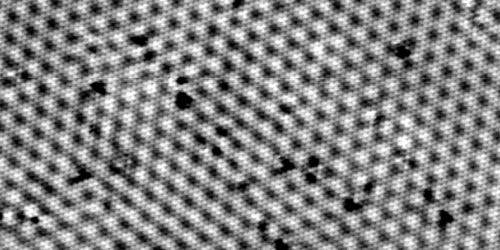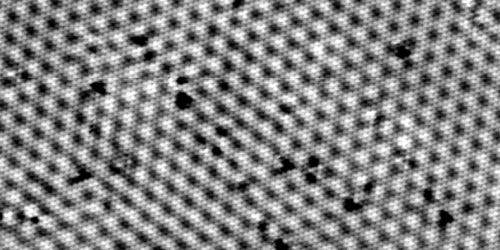Picking out Waves in a Material’s Charge Distribution
Because of the wave nature of electrons, the distribution of electric charge in a material can adopt a standing wave pattern, called a charge density wave. Researchers would like to better understand these waves, as they may influence the pairing of electrons in superconductors. Past studies have measured wavelengths and amplitudes of these waves, but accurately detecting their phases has been a challenge. Now, Árpád Pásztor of the University of Geneva and colleagues have developed a method for accurately mapping phases as well as amplitudes of charge density waves across a material’s surface. With this technique, they’ve found clear evidence that multiple charge density waves can exist simultaneously in a material.
The team’s technique uses a local fitting algorithm to analyze the charge distribution observed in scanning tunneling microscopy images. The researchers demonstrated the method on layered conductors called transition-metal dichalcogenides. Past studies of these materials found charge density waves on their surfaces in the form of triangular lattice patterns. Pásztor and colleagues analyzed several samples with their technique and found that the observed triangular patterns result from three individual charge density waves aligned along three separate directions. They determined that the three waves were distinct, in that the phase and amplitude features exhibited by one wave were not observed by the other two.
The identification of the three distinct waves allowed the researchers to extract other information, such as the location of domain walls and defects. In the future, the team hopes to provide similar detailed information on materials exhibiting both charge density waves and superconductivity, in order to gain a greater understanding of how the phenomena may be related.
This research is published in Physical Review Research.
–Erika K. Carlson
Erika K. Carlson is a freelance science writer based in Brooklyn, New York.





